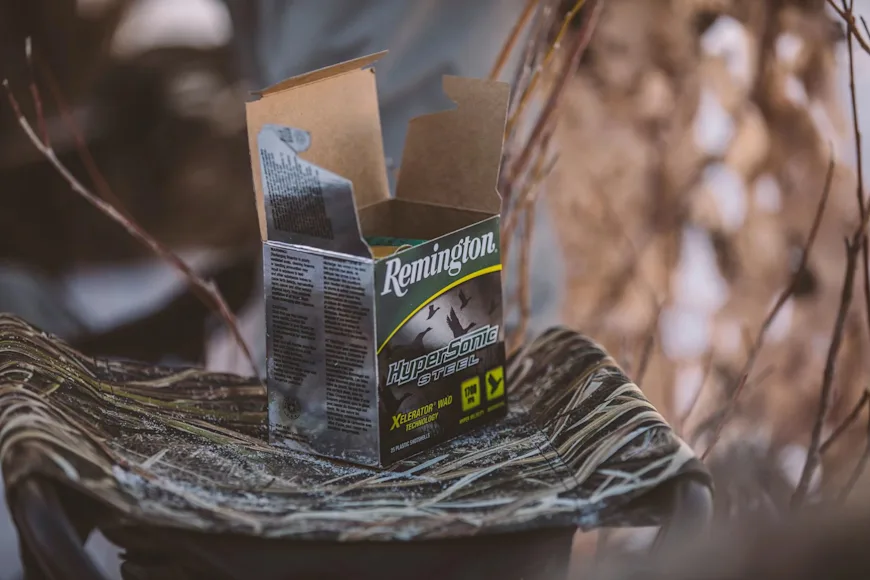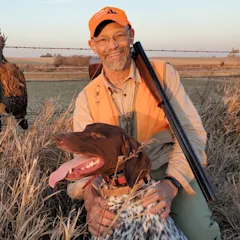A man once asked me for advice about his goose gun. The recoil of 3 ½-inch shells caused the trigger guard of his gun to whack the middle finger of his hand, leaving him bruised and sore after the hunt. He wanted to know if there was some kind of padding made for trigger guards. I said yes, such things existed, but why not try some 3-inch shells that wouldn’t kick as much? He was so stunned by my suggestion, he couldn’t form words to reply. He just sputtered and looked at me as if I had suggested throwing marshmallows at incoming geese.
In a similar fashion, a famous turkey hunter once yelled at me because I palmed the 3 ½-inch shell he gave me to shoot in the gun I borrowed from him. He was not happy when I admitted I had used a 3-inch shell instead. Note that the turkey died.
If you hadn’t guessed, I am in the “not so much” camp when it comes to shooting 3 ½-inch shells. That doesn’t mean I’m right, or that they have no place. Like anything in ballistics, there are tradeoffs when you choose to go long with your 12-gauge shells. Here's what you should consider.

Patterns and Performance
Three-and-a-half-inch shells do perform. You would think that cramming more shot down the bore of a 12-gauge would lead to inefficiency. I thought so, and I was wrong. I had the chance to pattern-test 3- and 3 ½-inch Black Cloud loads in Federal’s lab, with a high-speed camera and computerized pattern analysis. Pattern percentages were identical, as were shot-string lengths. By virtue of its heavier payload, the 3 ½-inch, 1 ½-ounce shell consistently put a lot more pellets on target than the 3-inch, 1 ¼-ounce load. At 40 yards, we were getting 77 steel BBs on target with the 3 ½-inch shell vs 63 with the 3-inch. That’s significant.
Lead shot is a slightly different story than hard steel, tungsten-iron, or TSS, as the higher you stack lead in a hull, the more the pellets at the bottom of the shot column are squished into deformity when the gun goes off, causing them to fly out of the main pattern. Pile bismuth high, and the pellets at the bottom shatter. Nevertheless, when shells are carefully loaded and the shot is protected with buffer, 3 ½-inch lead and bismuth magnums can perform. Winchester Long Beard lead turkey loads are a prime example of how well big shells can pattern.
Back when I was more interested in, and better at, long-range shooting, I could shoot ducks and geese a long way away with 3 ½-inch steel. You get 20 percent more pellets on target with a good 3 ½-inch load. That may only equate to five or so added yards of range, but it also means more birds inside that maximum range are hit harder and killed cleanly. A good 3 ½-inch lead turkey load adds a few effective yards in the woods.

Recoil
The tradeoff for a bit of added range is a lot more recoil. I can take the kick of 3 ½-inch shells in a heavy, soft-kicking gas semiauto like a Versa Max (the best ever for recoil reduction) or a Beretta A400 with Kick-Off. Almost any other gun, and they become unpleasant for me to shoot. Put them in a lightweight inertia gun, and they’re brutal. We’re all different, and we all have different pain thresholds, so a 3 ½-inch shell that bothers me may not faze you. They give me headaches.
However, even if you don’t think a 3 ½-inch shell hurts, using them may affect your shooting. On the old Gun Nuts TV show, we set up an easy incoming triple on a sporting clays course, and I tried shooting it with various loads. With target ammo, I could break the triple every time. When we switched to 3 ½-inch steel magnums, I could never recover from recoil in time to break more than two of the three.
Over time, shooting 3 ½-inch shells can beat bad shooting habits into you, like head-lifting or dropping the gun off your face. Those are simply your body's sensible self-preservation reflexes. It wants to get away from the source of pain, and you can’t blame it.
Bottom Line
If you do a lot of long-range pass shooting with steel, or you want to shoot lead and kill turkeys that hang up at 55 yards, then 3 ½-inch shells are worth shooting. If you can afford to shoot the premium tungsten and bismuth loads, you probably don’t need 3 ½-inch shells. Or, if you can keep your shots within 40 or so yards, 3-inch steel shot performs just fine. I shoot 3-inch steel at ducks and geese with zero complaints, although I rarely take shots over 40 yards anymore.
Finally, if you shoot 3 ½s, you’ll pay more, both for the ammunition and for a gun to shoot them. A Franchi Affinity 3-inch lists for $949. An Affinity 3 ½-inch is $1249. And, with some—but not all—3 ½-inch guns, you give up reliable function with some light target loads that a 3-inch gun might cycle just fine for dove hunting or off-season clay practice.
Ammunition will run you $9 to $15 per box more, too. Federal’s Black Cloud sells for $45.99 per box in 3-inch 12-gauge and $54.99 in 3 ½. Shoot a lot, and the price of 3 ½-inch ammo adds up. You have to decide if it’s worth the extra pounding on your shoulder and your bank balance to send more pellets downrange.


